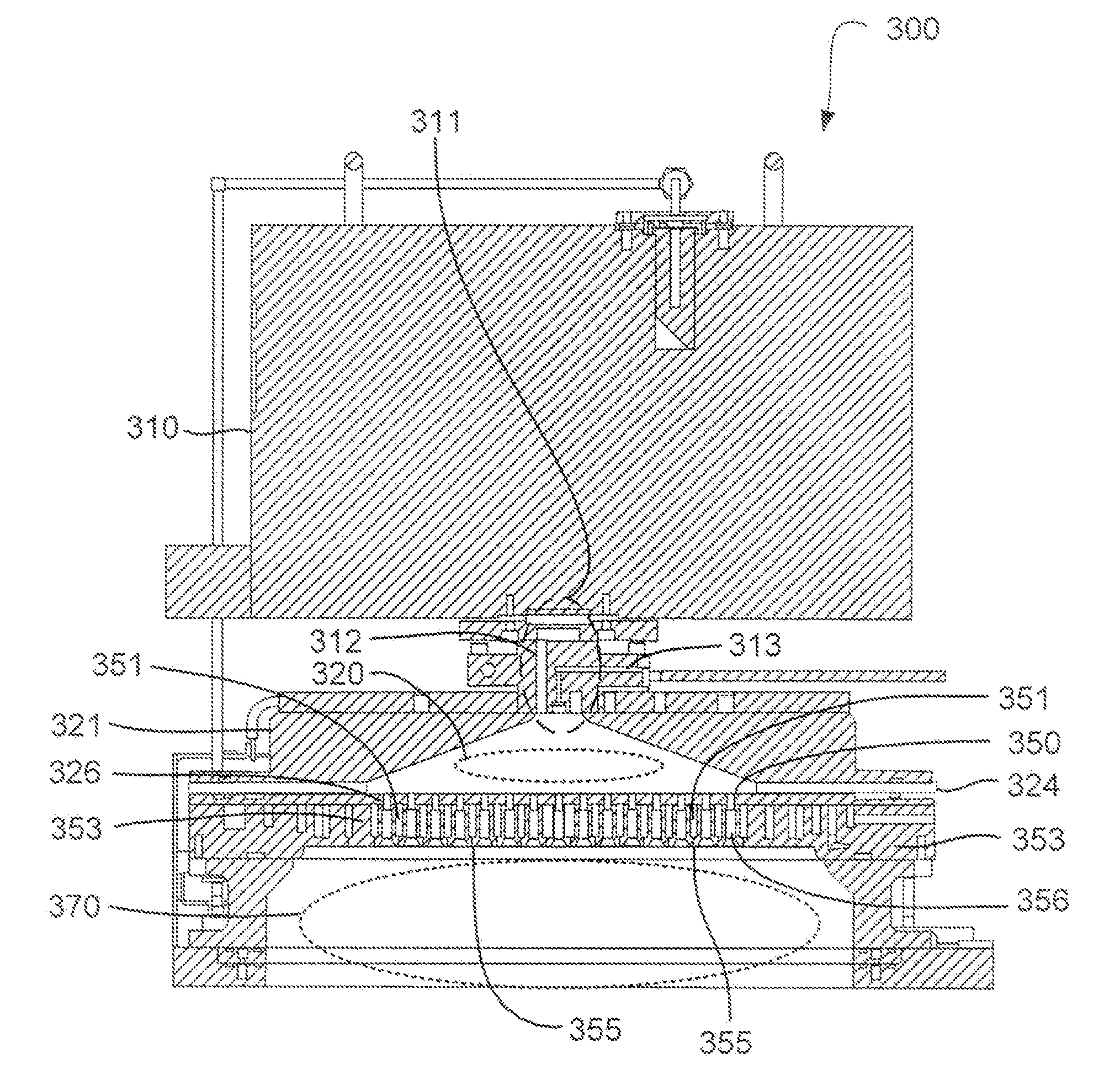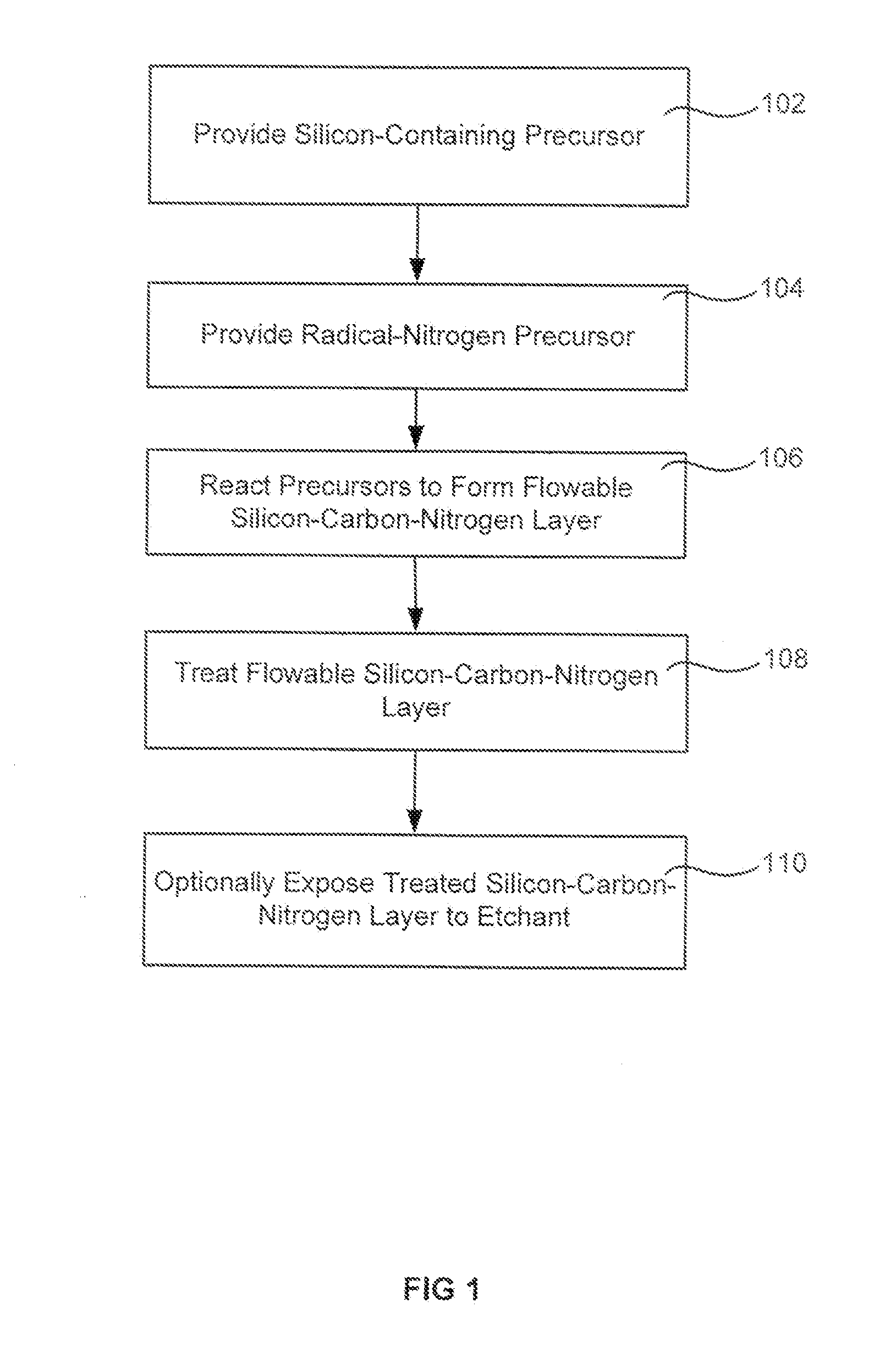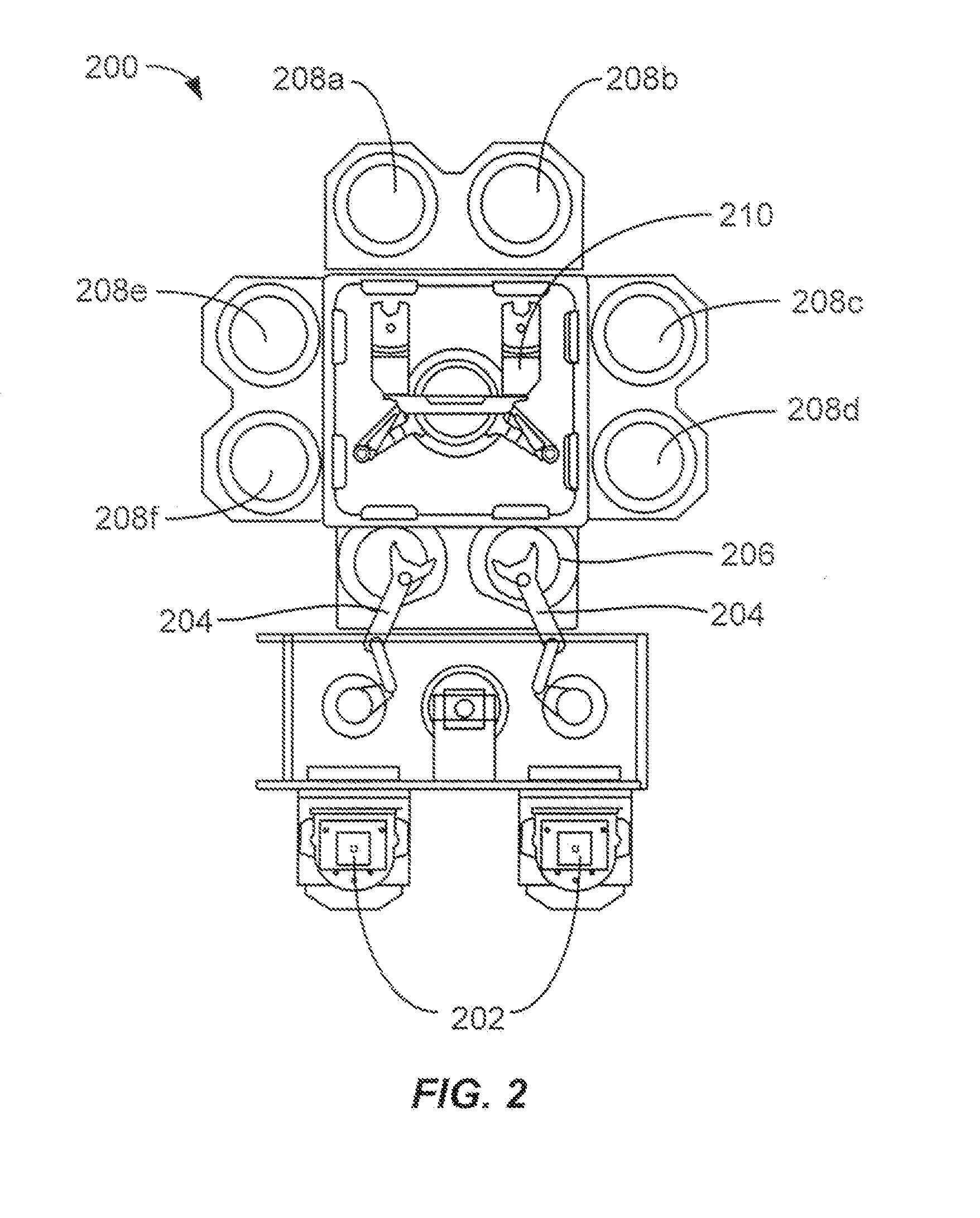Flowable silicon-carbon-nitrogen layers for semiconductor processing
a technology of silicon carbon-nitrogen and flowable silicon, which is applied in the direction of coating, chemical vapor deposition coating, metallic material coating process, etc., can solve the problems of voids or seams, difficult to fill gaps without dielectric materials, and conventional chemical vapor deposition techniques that experience an overgrowth of materials, etc., to reduce the number of c—h bonds, increase the rate of film aging and contamination, and increase the wet-etch-rate-ratio
- Summary
- Abstract
- Description
- Claims
- Application Information
AI Technical Summary
Benefits of technology
Problems solved by technology
Method used
Image
Examples
Embodiment Construction
[0018]Methods are described for applying flowable CVD techniques to the formation of flowable silicon-carbon-nitrogen containing materials. These flowable Si—C—N films may be further treated to form Si—C—N blanket layers, gapfills, and sacrificial barriers (among other elements) useful in the fabrication of integrated circuits.
Exemplary Si—C—N Formation Methods
[0019]Referring now to FIG. 1, selected steps in a method of forming a silicon-carbon-nitrogen containing dielectric layer on a substrate. The method may include the step of providing a silicon-containing precursor 102 to a chemical vapor deposition chamber. The silicon-containing precursor may provide the silicon constituent to the deposited Si—C—N film, and may also provide the carbon component. Exemplary silicon-containing precursors include 1,3,5-trisilapentane, 1,4,7-trisilaheptane, disilacyclobutane, trisilacyclohexane, 3-methylsilane, silacyclopentene, silacyclobutane, and trimethylsilylacetylene, among others:
[0020]Add...
PUM
| Property | Measurement | Unit |
|---|---|---|
| sizes | aaaaa | aaaaa |
| sizes | aaaaa | aaaaa |
| sizes | aaaaa | aaaaa |
Abstract
Description
Claims
Application Information
 Login to View More
Login to View More - R&D
- Intellectual Property
- Life Sciences
- Materials
- Tech Scout
- Unparalleled Data Quality
- Higher Quality Content
- 60% Fewer Hallucinations
Browse by: Latest US Patents, China's latest patents, Technical Efficacy Thesaurus, Application Domain, Technology Topic, Popular Technical Reports.
© 2025 PatSnap. All rights reserved.Legal|Privacy policy|Modern Slavery Act Transparency Statement|Sitemap|About US| Contact US: help@patsnap.com



